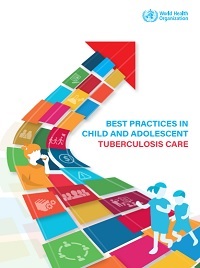Best practices in child and adolescent tuberculosis care

Abstract: Tuberculosis (TB) in children and adolescents affects a vulnerable population, which can no longer be ignored. The Roadmap for childhood tuberculosis: towards zero deaths, published in 2013, provided a strategic framework to address the TB epidemic in children. Significant progress has been made since the first Roadmap was published. It is critical to reflect on the lessons learned in the implementation of interventions at local, national, regional and global levels, to allow replication and scale-up of best practices, and to identify any remaining challenges
Ending TB in children and adolescents is an integral part of the End TB Strategy, which is aligned with the Sustainable Development Goals (SDGs) and has defined milestones and targets to end the global TB epidemic. Achieving these targets requires provision of TB care and prevention within the broader context of universal health coverage
Outstanding child and adolescent TB priorities include the need to: find the missing children with active TB and link them to TB care; prevent TB in children who are in contact with infectious TB cases (through implementation of active contact investigation and provision of preventive treatment); and advance integration within general child health services, including maternal and child health/ reproductive, maternal, newborn, child and adolescent health, HIV, nutrition and other programmes.
Ending TB in children and adolescents is an integral part of the End TB Strategy, which is aligned with the Sustainable Development Goals (SDGs) and has defined milestones and targets to end the global TB epidemic. Achieving these targets requires provision of TB care and prevention within the broader context of universal health coverage
Outstanding child and adolescent TB priorities include the need to: find the missing children with active TB and link them to TB care; prevent TB in children who are in contact with infectious TB cases (through implementation of active contact investigation and provision of preventive treatment); and advance integration within general child health services, including maternal and child health/ reproductive, maternal, newborn, child and adolescent health, HIV, nutrition and other programmes.
Author(s): World Health Organization
Year: 2018
Language: English
Region(s): Global
Resource Type: Guidance and Tools
Source: World Health Organization
Filed under: Adolescents, Best practices, Childhood TB, Children, Guidance, Guidance and Tools, TB care
